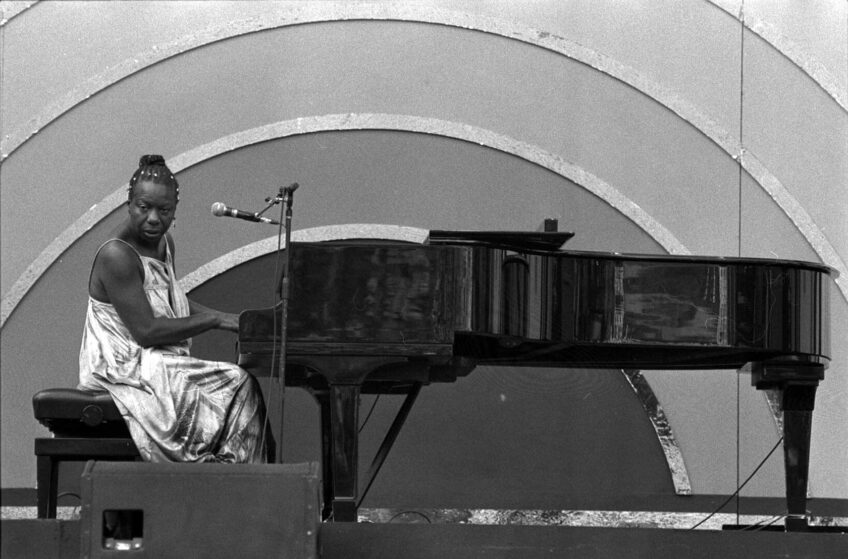The end of affirmative action – Supreme Court turns back the clock on college access

The six Supreme Court justices who last week struck down affirmative action in college admissions ignored America’s legacy of slavery and segregation, while the three dissenting justices, all of whom are women, recognized this history of slavery and its continuing effects in colleges.
Justice Sonia Sotomayor, writing for the dissent in Students for Fair Admissions v. President & Fellows of Harvard College, stated, “American society was structured around the profitable institution that was slavery, which the original Constitution protected.” She further wrote: “Thus, from this nation’s birth, the freedom to learn was neither colorblind nor equal.”
Justice Clarence Thomas, the second Black justice to serve on the court, wrote in support of the majority opinion. He argued the Constitution was colorblind, and that Harvard and the University of North Carolina discriminated on the basis of race by allowing race to be a factor in their admission programs.
Thomas and the other five justices in the majority ignored that the Constitution was pro-slavery. They ignored the country’s blatant history that dehumanized people of African descent, whether free or enslaved, and barred most Blacks from even learning to read. This process of dehumanization became the law and was codified in the Dred Scott decision. Dred Scott brought suit seeking his and his family’s freedom on the grounds that he and his family had resided in Illinois with his master. Illinois was a free state.
After the Scotts returned to Missouri, they filed a lawsuit in the Circuit Court of the United States seeking the freedom of Dred, his wife Harriet and their children Eliza and Lizzie. Chief Justice Roger Brooke Taney wrote the Supreme Court’s opinion in Dred Scott v. Sandford (1857) in which he denied the Scotts’ plea for freedom. His rationale was clear:
“They had for more than a century before been regarded as beings of an inferior order; and altogether unfit to associate with the white race, either in social or political relations; and so far inferior, that they had no rights which the white man was bound to respect; and that the negro might justly and lawfully be reduced to slavery for his benefit. He was bought and sold, and treated as an ordinary article of merchandise and traffic, whenever a profit could be made by it. This opinion was at that time fixed and universal in the civilized portion of the white race.”
Taney was a slaveholder, as were the five justices who voted with him in the majority opinion. The two dissenting justices were from the North: Benjamin R. Curtis of Massachusetts and John McLean of Ohio. Taney was also the former law partner of Francis Scott Keyes, author of the Star Spangled Banner, another slaveholder.
In the Dred Scott case, justice was not blind. In fact, there was no justice for the Scott family. The decision became the law of the land and remained such until the passage of the Thirteenth and Fourteenth Amendments to the Constitution.
In all Southern states before the post-war amendments, it was illegal for a slave to read. Frederick Douglass, a slave, wrote in his autobiography about his master’s determination to keep him from learning to read:
“What he most dreaded, that I most desired. What he most loved, that I most hated. That which to him was a great evil, to be carefully shunned, was to me great good, to be diligently sought; and the argument which he so warmly urged, against my learning to read, only served to inspire me with a desire and determination to learn. In learning to read, I owe almost as much to the bitter opposition of my master, as to the kindly aid of my mistress. I acknowledge the benefit of both.”
The June 29, 2023 decision by the Supreme Court restricting Black access to colleges is a continuation of exclusionary practices that began in slavery.
In a seminal challenge to affirmative action in 1978, the court was split on whether the reservation of 16 spaces for minority students at the medical school of the University of California at Davis violated Title VI of the Civil Rights Act of 1964 and the equal protection clause of the Fourteenth Amendment.
In Regents of the University of California v. Bakke, the court had to determine whether strict scrutiny applied in such a case, when the racial classification was benign as opposed to odious. UC Davis argued that the court should use a benign classification because the affirmative action program was designed to include Blacks who had been historically excluded from medical schools. Bakke argued that the classification should be considered odious and treated like prior cases where the challenge was to segregation and exclusion of Blacks in the South.
The court accepted Bakke’s argument and ruled that the program could only be justified if the university could prove a compelling state need for the affirmative action program. The university offered four arguments. The court rejected three.
Through Justice Lewis Powell’s opinion, the court accepted the fourth argument, the educational benefits of a diverse student body, as an allowable justification for the use of race in the medical school’s admissions. Although the medical school urged the court to accept the elimination of societal discrimination as grounds for affirmative action, Powell rejected the argument, calling societal discrimination “an amorphous concept of injury.” He wrote that in appropriate cases, affirmative action could be used to eliminate the effects of specific identified acts of discrimination.
Justice Thurgood Marshall, the first Black justice on the Supreme Court, saw a relationship between the discriminatory past and the present condition of Blacks in America. Marshall wrote in Bakke that because of hundreds of years of class-based discrimination against “Negroes,” the court should be willing to allow a class-based remedy for that discrimination.
Even though the court in Bakke and later in Grutter v. Bollinger (2003) allowed universities to consider race as one factor in college admissions, the Republican-nominated majority on the current court shut that down.
Some legal scholars have noted that the Thirteenth Amendment that ended slavery in 1865 also eliminated the badges and incidents of slavery. Therefore, it follows that affirmative action can be used as a tool to eliminate the continuing effects of past discrimination and dehumanizing slavery that still prevail.
In the Students for Fair Admissions case, Justice Ketanji Brown Jackson acknowledged the sins of the past are manifested in the present: “History speaks. In some form, it can be heard forever. The race-based gaps that first developed centuries ago are echoes from the past that still exist today. By all accounts, they are still stark.”
The court’s wholesale elimination of affirmative action without any recognition of slavery and segregation sets this nation on a track to eliminate equal educational rights that the Fourteenth Amendment was enacted to protect. The cases brought before this Republican-dominated court are a blatant political movement by the far right to return African Americans to their subordinate places before the affirmative action era.
Sotomayor wrote in Students for Fair Admissions: “The fact that affirmative action in higher education has worked and is continuing to work is no reason to abandon the practice today.”
Affirmative action must be recognized as a remedy for the effects of slavery and segregation. As such, it should become an essential part of the global movement for reparations to the victims of slavery, segregation and genocide. This movement has become international. In the United States, the late Randall Robinson was a pioneer in this work. His 2000 book, “The Debt: What America Owes to Blacks,” was a national bestseller. In the Caribbean, Hilary McD. Beckles has reached out to the international community through his 2013 book, “Britain’s Black Debt: Reparations for Caribbean Slavery and Native Genocide.”
Because the assault upon affirmative action has been orchestrated by Republican interests, those who oppose these racist actions must organize and elect progressive political leaders who will fight for full participation of all young people in higher education. This movement for inclusion must involve all levels of government. There has been some movement in Boston. The City Council recently passed a resolution, which Mayor Michelle Wu signed, establishing the Reparations Task Force. It is charged with making recommendations on reparations within the next year.
Ironically, Professor Jemadari Kamara of UMass Boston and Yvette Modestin of Encuentro Diaspora Afro wrote the ordinance that established the task force, yet UMass Boston has orchestrated actions to curtail if not destroy its Africana Studies Department that has been in existence for 50 years and has influenced the lives of countless numbers of urban students. Kamara, who chairs the department, and his colleagues there have been leaders on reparations. Affirmative action requires that all of us respond to assaults, like the Supreme Court’s, upon our rights to equal educational opportunities.
Robert Johnson Jr. is a civil rights attorney, emeritus professor of Africana Studies at UMass Boston and author of “Race, Law, and Public Policy.”






